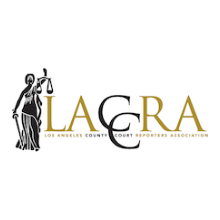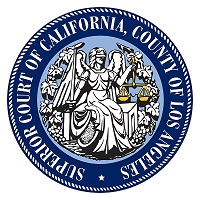ADA & FCC GuidelinesThe United States has several laws covering accessibility requirements for persons with disabilities, including those who are deaf or hard of hearing.Twenty-First Century Communications and Video Accessibility Act of 2010 – Public Law 111-260 On October 8, 2010, President Obama signed the Twenty-First Century Communications and Video Accessibility Act (CVAA) into law. The CVAA updates federal communications law to increase the access of persons with disabilities to modern communications. The CVAA makes sure that accessibility laws enacted in the 1980s and 1990s are brought up to date with 21st century technologies, including new digital, broadband, and mobile innovations. The following are highlights of the new law. Title I – Communications Access • Requires advanced communications services and products to be accessible by people with disabilities. Advanced communications services are defined as (1) interconnected voice over Internet protocol (VoIP) service; (2) non-interconnected VoIP service; (3) electronic messaging service; and (4) interoperable video conferencing service. This includes, for example, text messaging, e-mail, instant messaging, and video communications.
• Requires access to web browsers on mobile devices by people who are blind or visually impaired (a “ramp” to the Internet on mobile devices).
• Creates industry recordkeeping obligations; requires changes to complaint and enforcement procedures; tightens deadlines for the FCC to respond to consumer complaints; requires biennial reporting by the FCC to Congress; and directs the Comptroller General to issue a five-year report on the FCC’s implementation.
• Requires an FCC clearinghouse on accessible communications services and equipment.
• Applies the hearing aid compatibility mandates to telephone-like equipment used with advanced communications services.
• Updates the definition of telecommunications relay services (TRS) to include people who are deaf-blind and to allow communication between and among different types of relay users.
• Requires interconnected and non-interconnected VoIP service providers to contribute to the Interstate TRS Fund.
• Directs the allocation of up to $10 million per year from the Interstate TRS Fund for the distribution of specialized equipment to low-income people who are deaf-blind, to enable these individuals to access telecommunications service, Internet access service, and advanced communications.
• Authorizes FCC action to ensure reliable and interoperable access to next generation 9 1 1 services by people with disabilities.
Title II – Video Programming
• Restores video description rules promulgated by the FCC in 2000 and authorizes some expansion of those obligations over the next 10+ years.
• Requires video programming that is closed captioned on TV to be closed captioned when distributed on the Internet (does not cover programs shown only on the Internet).
• Establishes deadlines for the FCC to respond to requests for exemption from the closed captioning rules.
• Requires video programming distributors, providers, and owners to convey emergency information a manner that is accessible to people who are blind or visually impaired.
• Expands the requirement for video programming equipment (equipment that shows TV programs) to be capable of displaying closed captions, to devices with screens smaller than 13 inches (e.g., portable TVs, laptops, smart phones), and requires these devices to be able to pass through video descriptions and emergency information that is accessible to people who are blind or visually impaired, if technically feasible and achievable.
• Requires devices designed to record TV programs to pass through closed captions, video description, and emergency information so viewers are able to turn on/off the closed captions and video description when the TV program is played back, if achievable.
• Requires interconnection mechanisms (cables) to carry (from the source device to the consumer equipment – e.g., TV set) the information necessary to permit the display of closed captions and make video description and emergency information audible.
• Requires user controls for TVs and other video programming devices to be accessible, and to have a button, key, icon, or comparable mechanism designated for easily activating closed captioning and video description.
• Requires on-screen text menus and program guides displayed on TV by set-top boxes to be accessible to people who are blind or visually impaired and requires set-top boxes to have a button, key, icon, or comparable mechanism to allow easy activation of closed captioning (when built-in to the set-top box) and video description.
The Americans with Disabilities Act of 1990. The Americans with Disabilities Act (ADA) requires all services to be accessible to individuals with disabilities. The ADA was built upon the Rehabilitation Act of 1973. Unlike the Rehabilitation Act, the ADA has no requirement for an entity to receive federal funds. The ADA requires that reasonable accommodations be made to programs, activities and services except when to do so will cause undue hardship. The ADA has four primary titles: • Title I – Employment
• Title II – Public Services (Local and State government entities)
• Title III – Public Accommodations guarantees people with disabilities the “full and equal enjoyment of the goods, services, facilities, privileges, advantages, or accommodations of any place of public accommodation.” This includes hotels, restaurants, theatres, stores, banks, airports, and so forth.
• Title IV – Telecommunications
For more information: http://www.ada.gov/cguide.htmThe Rehabilitation Act of 1973, Section 504. Section 504 of the Rehabilitation Act of 1973 requires that any organization receiving federal funds, directly or indirectly, must make their services accessible to people with disabilities. Example: A deaf student who does not use sign language has been accepted to attend college. She requests CART services for communication access in her classes. The college receives federal student loans and is, therefore, bound by Section 504. As a recipient of federal funds, the college must provide CART or a service of equal quality to this deaf student. The student’s preferred method of communication must be considered when determining what accommodation to provide. The Rehabilitation Act of 1973, as amended in 1998, Section 508. Section 508 was created to ensure that Internet services procured by federal agencies are equally-accessible to people with disabilities. According to the Department of Health and Human Services Website, accessibility applies to “Web applications, Web pages and all attached files. It applies to intranet as well as public-facing Web pages.” The requirement for accessibility on the Internet means that federal Web pages with videos and audio streams must be captioned. |




